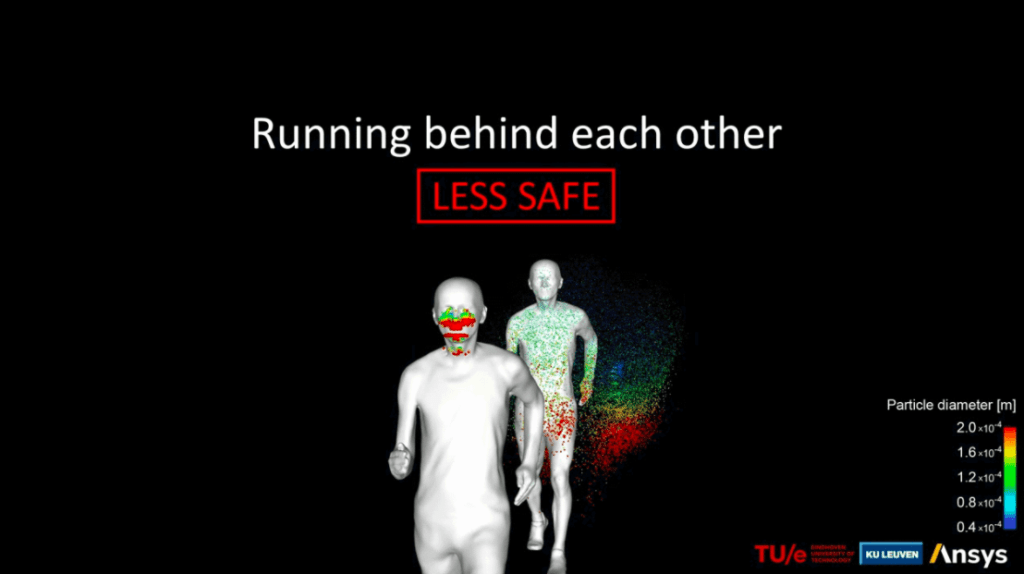People exercising outdoors during the coronavirus lockdown should apply social-distancing rules that are stricter than those officially recommended, a new study suggests.
Researchers at KU Leuven and at the Eindhoven University of Technology created simulations showing how those working out outdoors could be exposing themselves to the new coronavirus (Covid-19) even when staying 1.5 metres apart.
The simulations show that the respiratory droplets of someone potentially infected with the virus could come into contact with anyone located behind them by travelling through what he referred to as a slipstream.
"When you are moving —running, cycling, walking— you are actually creating an area behind you that is often called a slipstream, or a wake," Study Coordinator Bert Blocken told The Brussels Times.
Related News
- Saint-Josse will distribute reusable mouth masks to citizens
- Coronavirus: Impact of warm weather 'not certain'
- Coronavirus: Belgium reaches 23,403 confirmed cases
Blocken said that slipstreams could be described as something similar to a vacuum or drag effect which occurred when the regular airflow was disturbed by someone who was in motion.

Slipstream simulations of joggers running at 14 kilometres per hour. Provided by: Prof. Bert Blocken Department of Civil Engineering at KU Leuven
Athletes who are running or cycling behind each other use each other's slipstreams because it helps them go at a higher speed, Blocken explained.
The simulations showed that the slipstreams between two people jogging behind one another were likely to see the second person come into contact with the first's droplets as they travelled through the slipstream, even at a walking speed of 4 kilometres per hour.
"When people speak, exhale, cough or sneeze they generate droplets, and while the largest droplets tend to fall to the ground first, the smaller ones can remain in the air a bit longer, so it is important that a person who is behind another does not walk into this cloud of droplets," Blocken said.
While slipstreams can sometimes be as long as 10 to 15 metres, Blocken said that they remained quite narrow and noted that respiratory droplets tended to evaporate quite quickly.
"The recommended distance of 1.5 metres is very effective when people are moving slowly, but the situation is different when it comes to the active movement in sports," he said.
Based on the simulations, the study suggests that one way to reduce this risk is to avoid being directly behind another person, either by running side by side or by running in a staggered formation.
Sharing the study's findings on Twitter, Blocken said that while the simulations did not take into account diverse wind conditions, the "staying out of slipstreams" recommendations also applied for those exercising in windy conditions.
Blocken said the study was in the process of being approved but that the team of four behind it chose to share its findings in the light of the current coronavirus pandemic, during which authorities have said that despite the lockdown, residents were allowed to practise physical activities outdoors.
Gabriela Galindo
The Brussels Times

